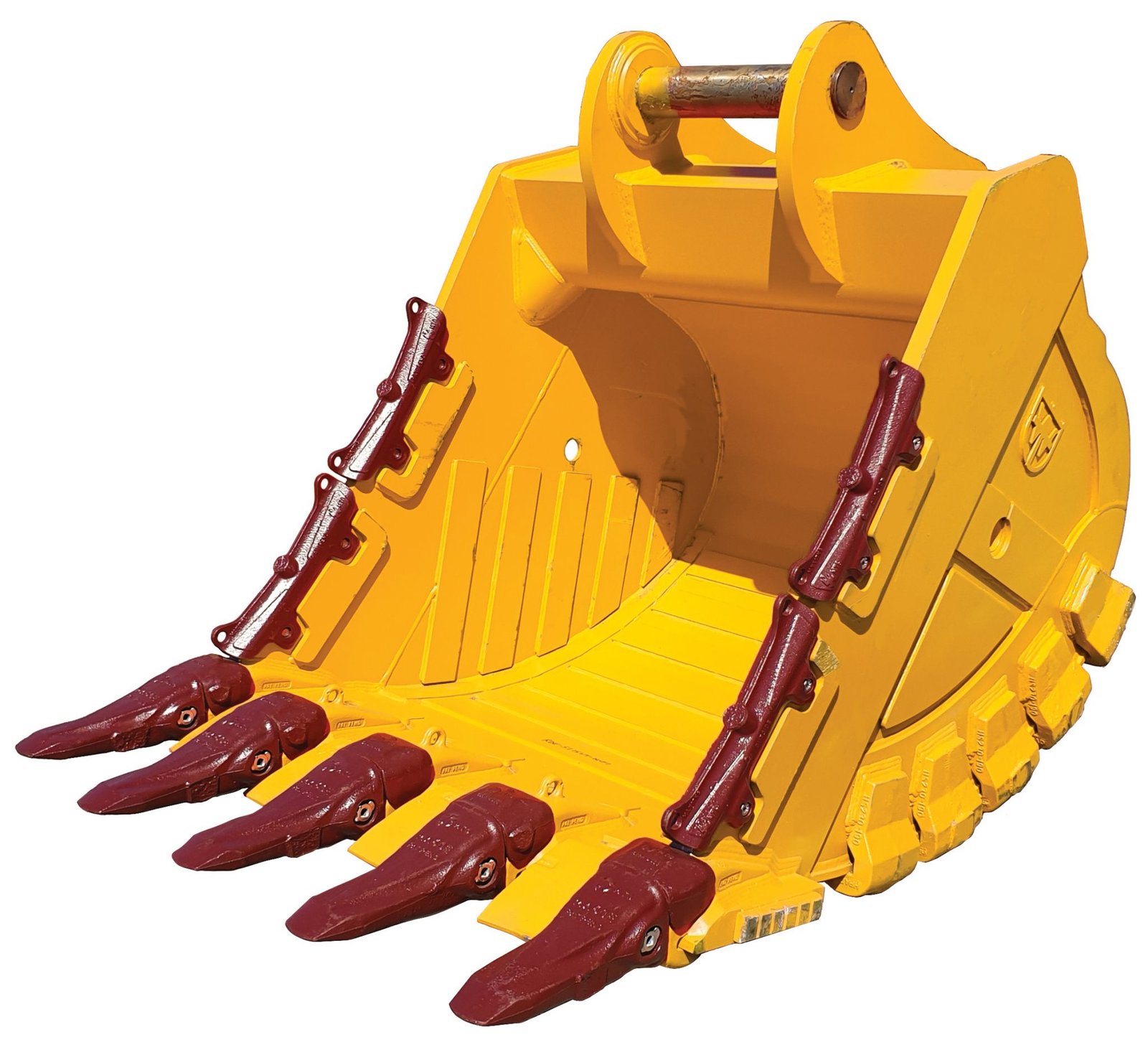When it comes to tackling the toughest excavation challenges, the right tools make all the difference. Among these tools, the rock bucket stands out as a critical component for hard-rock excavation projects. But what makes a rock bucket effective in such demanding environments? The answer lies in its design. From material selection to structural reinforcement, the design of a rock bucket plays a pivotal role in ensuring maximum efficiency, durability, and performance.
A rock bucket is a heavy-duty attachment designed specifically for digging and loading dense, abrasive materials like granite, basalt, and limestone. Unlike standard excavation buckets, rock buckets are built to withstand high-impact forces and minimize wear in challenging terrain.
In mining, quarrying, and construction sites where hard rock is common, a well-designed rock bucket not only improves productivity but also reduces downtime, operating costs, and equipment wear.
A rock bucket is subjected to constant abrasion and impact. To combat this, manufacturers use high-strength, wear-resistant steel for both the body and cutting edges. Reinforced side plates and heavy-duty corner guards further enhance the bucket’s resilience.
Buckets designed with Hardox or equivalent abrasion-resistant materials can extend service life dramatically compared to conventional steel. This material choice allows operators to dig into hard rock with less fear of premature failure.
Efficiency isn’t just about digging faster—it’s about lasting longer. A strong, reinforced structure in the rock bucket prevents deformation under heavy loads. Features like double-bottom plates, thicker side walls, and robust heel shrouds ensure the bucket maintains its shape and functionality even in extreme conditions.
By resisting bending and cracking, the rock bucket minimizes maintenance downtime and maximizes on-site productivity.
The teeth and adapters are arguably the most crucial parts of a rock bucket for penetrating hard rock. Modern designs use sharp, pointed teeth made of high-grade steel to focus force on a smaller area, increasing penetration efficiency.
In addition, modular and replaceable tooth systems simplify maintenance. Operators can replace worn teeth without needing to remove the entire bucket, keeping operations running smoothly.
The shape of the rock bucket determines how efficiently it can scoop and carry materials. A properly curved back and tapered side profile reduce resistance during digging, allowing smoother material flow into the bucket.
However, capacity must be balanced with strength. Oversized buckets may overload the excavator, leading to mechanical failures or excessive fuel consumption. A well-designed rock bucket optimizes capacity to match the machine’s specifications, improving cycle times without sacrificing structural integrity.
To further enhance longevity and efficiency, many rock buckets come with additional protective features:
Side cutters to prevent damage to bucket sides.
Heel shrouds to shield the bottom corners during dragging motions.
Lip shrouds to guard the cutting edge against wear.
These features reduce the need for frequent repairs and ensure consistent performance in harsh environments.
An intelligently designed rock bucket offers several advantages for hard-rock excavation:
✅ Increased Productivity: Faster digging cycles and improved material handling reduce project timelines.
✅ Lower Operating Costs: Durable materials and reinforced structures minimize repair and replacement expenses.
✅ Extended Equipment Life: Less strain on excavators and loaders means fewer breakdowns and longer service intervals.
✅ Improved Safety: Reliable buckets reduce the risk of sudden failures that could endanger operators and machinery.
Investing in the right rock bucket design isn’t just about upfront costs—it’s about long-term efficiency and profitability. Contractors and operators working in hard-rock environments should prioritize quality buckets from trusted manufacturers to ensure their machines perform at their best.
Before purchasing, consider factors such as:
✔ The type of rock and abrasiveness of the material.
✔ The size and power of your excavator or loader.
✔ The expected workload and operating hours.
Collaborating with manufacturers who offer custom design options can also help tailor the rock bucket to your specific needs.
The design of a rock bucket can make or break the success of hard-rock excavation projects. From material strength to tooth configuration, every design detail contributes to overall efficiency, durability, and performance. By understanding these factors and investing in high-quality rock buckets, operators can tackle the toughest terrains with confidence, reduce downtime, and keep their projects on schedule.
Whether you’re in mining, quarrying, or heavy construction, never underestimate the value of a well-engineered rock bucket—it’s the backbone of your excavation operation.